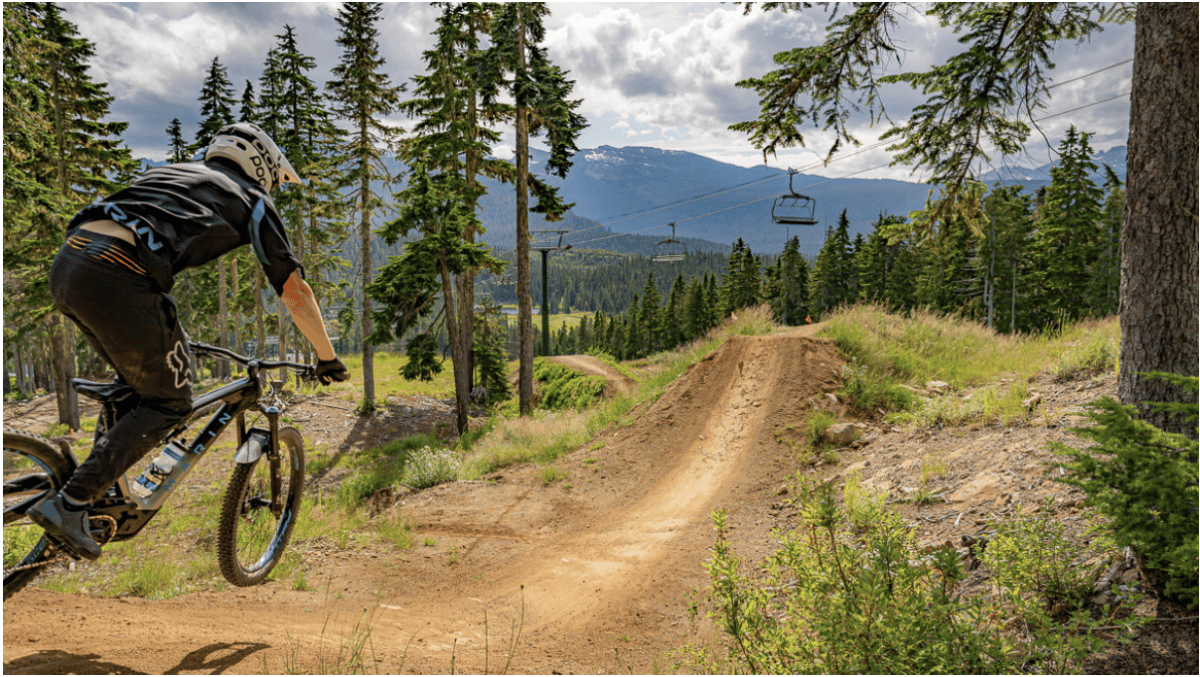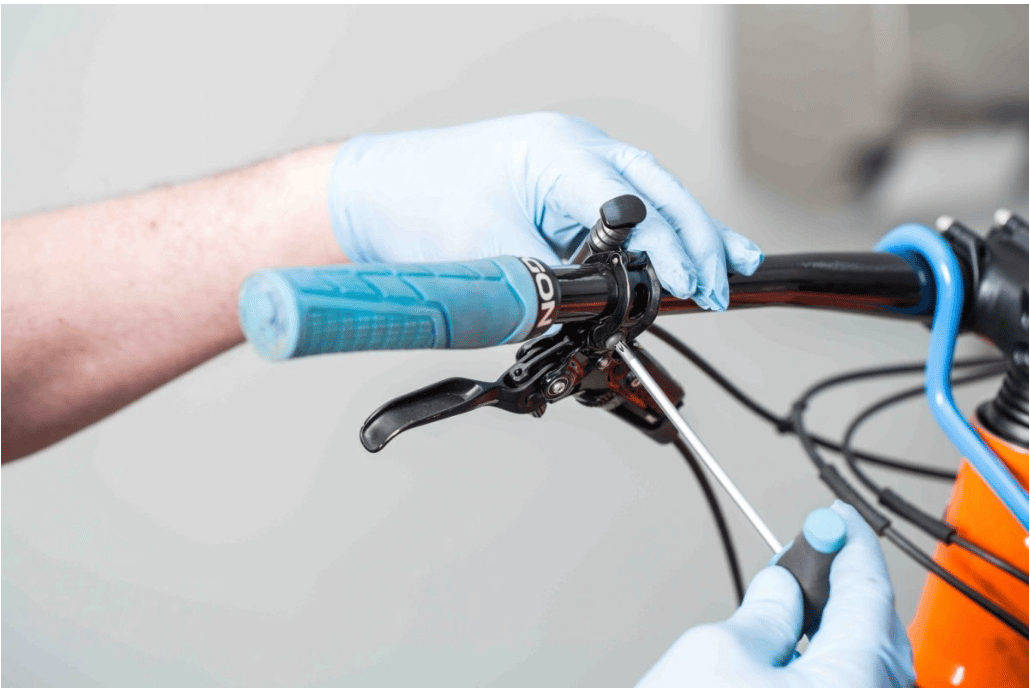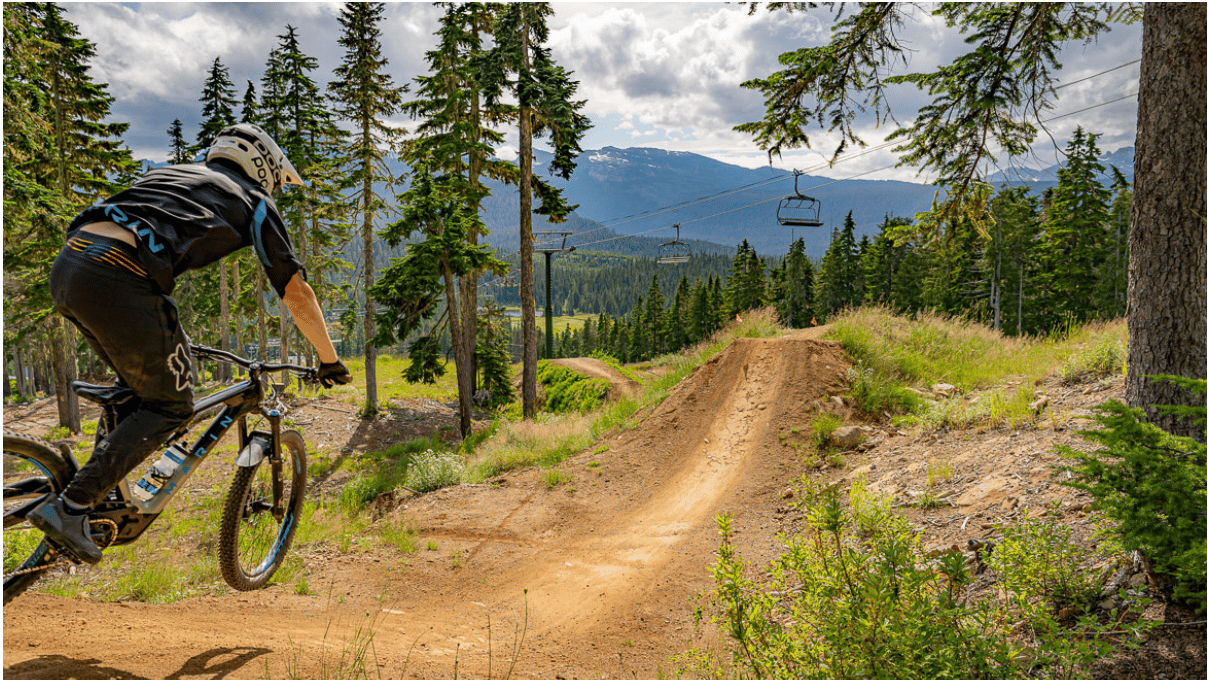If your mountain bike uses the hydraulic disc braking system then there is a specific liquid that it requires to actually do its job. When you pull the brake lever on your handle bars, the specified fluid in this hydraulic system causes the pads to close onto the disc rotor, which then brings you and your bike to a safe stop.

Mineral oil and DOT fluid are the two types of braking fluid that this system uses on your mountain bike. If you aren’t certain which one your bike uses then it is important to do some research or ask someone who knows because if you use the wrong fluid then it could cause your brakes to fail prematurely.
The role of brake fluids
When you pull on your brake lever you are essentially depressing a piston which is inside the lever and this piston sends the fluid to the hydraulic hose and then to the brake calliper. When this is happening it is actually building up a force which moves the pistons from their bores (the space in which they’re placed in the calliper). When the pistons move like this the brake pads move as well because they’re secured against one another, so when the brake lever is pulled the piston moves, which moves the brake pads, which then clamp down on the disc rotor. Then when you let go of the brake lever the reverse happens and the fluid goes back into its reservoir.
This hydraulic system of braking is a lot better than other systems like disc brakes or rim brakes because it provides a much more reliable braking system. This reliability is achieved because the system is completely sealed which means no cables can stretch. It also provides exceptional braking consistency because as the brake pads wear down the fluid in its reservoir, in the leve, actually tops up its system by itself over time.
This hydraulic system also has less chance of locking up your wheel and sliding all over, while you are braking, because of its increased modulation and control. This basically means that you are able to control how much braking force is being used by how hard you pull the brake lever.
Mineral Oil
Mineral oil actually isn’t just one specific type of liquid, it’s more of a vague, unregulated term that’s used because all manufacturers have their own way of making this mineral oil.
Advantages and Disadvantages

Some types of fluids and liquids can be very damaging to the mountain bikes paint but luckily this type of brake fluid isn’t but if any does spill and get onto anything it’s always good to wipe it off using a rag with isopropyl alcohol. Another great thing about this type of brake liquid is that it lasts much longer than DOT fluid so you won’t need to worry about changing it often.
Eye protection and a good pair of gloves are always recommended when dealing with any types of fluids or liquids when bleeding your brakes. Mineral oil shouldn’t cause any type of irritation to your skin but it is always good to be 100 percent safe.
Since mineral oils aren’t all the same they aren’t equal, which brings me to the first disadvantage of this brake fluid which is that it’s unregulated. The fact that different brands of mineral oil are different means that you should mix them with each other so youäll need to buy it from a proper bike dealership or on an online bike shop whereas with DOT you can get it from anywhere, even automotive industries.
There are two ways to look at the fact that it is unregulated though. It could be an advantage for the manufacturers because it means that they are allowed to do what they want with what they put into the mineral oil to make it perform the best or be the best quality.
Always be careful when it is raining or there is any sort of water around the mineral oil if it is exposed because if any water mixes with the mineral oil it will pool at the calliper and decrease the braking performance.
DOT Fluid
The second main type of braking fluid is DOT fluid which is an abbreviation for Department of Transport and there are actually four types of DOT fluids: DOT 3, DOT 4, DOT 5 and DOT5.1. DOT fluid is actually regulated and is used in the automotive industry so it’s really accessible.
Most brake fluid brands use DOT 4 or DOT 5.1 because they have higher boiling points. The DOT 5 isn’t used for mountain bike brakes because the fluid is made from silicon which causes the seals to swell. The other DOT fluids are made from glycol which is okay.
Advantages and Disadvantages

The biggest advantage that the DOT fluid offers is the fact that it is so available for you from bike shops, online retailers and even the automotive industry and is even, for the most part, cheaper than mineral oil.
The biggest disadvantage on the other hand is the fact that it is hygroscopic which means that it can absorb water and as moisture gets into your system it leads to a lower boiling point over time and damages your brakes performance like it’s stopping power. So to combat this it is important to bleed your brakes around once a year to make sure the system is completely clean and prevent these issues.
The boiling point of the DOT 5.1 fluid sits at around 260 degrees celsius but when it gets contaminated with water it sinks to a low 180 degrees celsius instead. Although you may not ever reach these levels of heat when you’re out cycling there is still an increased chance that the brakes will begin to fade. Even if you are very careful with not letting any water get into your system it is estimated that about 2 or 3 percent of its volume in water gets let in a year and could be even higher if you live in a humid area.
You have to be very careful when bleeding your brakes or when you’re handling the fluid because it is actually corrosive and can damage the paintwork on your bike if it spills and comes in contact with it. So to minimise the risk while you’re working with this fluid you should always be wearing protection like eyewear and gloves and wipe any spills that come from the fluid with isopropyl alcohol.
How often do brakes need bleeding
The simple answer is that you should try and bleed your brakes once a year but in truth you should just bleed them anytime your brake lever starts to feel spongy or your braking is weaker than usual.
If you are worried that you’ve let in water, like moisture or any sort of contamination then you can’t actually check it just by looking at it, you’ll need to bleed the brakes to see if there is a new fluid that’s gotten into your system. When you’re bleeding the brakes and see that the fluid which comes out is discoloured then you’ll need to replace the fluid until the discoloration is completely gone.

So there’s the full breakdown comparison of the two types of brake fluids you can use for your mountain bike but which one is the best? The brake system that your bike already uses is probably the best one for your bike. If you follow the manufacturers recommended service intervals and look after your bike you shouldn’t be able to notice any problems in the performance of either one of the fluid types.


What I would like to know is can you use dot 5.1 fluid in a break that is designed for mineral oil.
You should never use DOT brake fluid in a system that has been designed for mineral oil because brake fluids are hygroscopic, which means they absorb water from the air over time whereas mineral oil doesn’t
What I want to know is will the 5.1 hurt the seals in the mineral oil system.
Yes, it will ruin the seals.
Is that the only reason because I live in the desert southwest, not a lot of moisture out here.
Yes that is the main reason, using the DOT fluid will ruin your system designed mineral oil